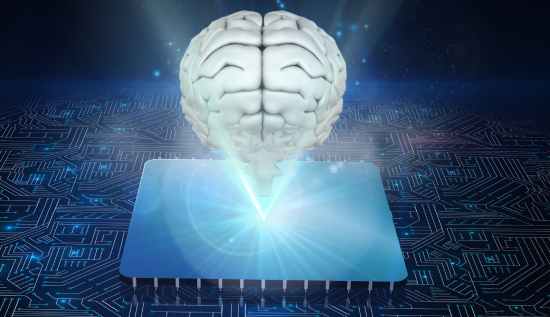Brain-Computer Interfaces (BCI): Latest Technology Trends

Keep ahead with the latest developments in Brain-Computer Interfaces (BCI), from wearable neurotechnology to AI-enhanced device control and robotics.
Brain-Computer Interfaces (BCI) are fast transforming from experimental laboratory tools into powerful commercial technologies that have the potential to alter healthcare, communication and the connection between humans and machines. The world is beginning to see what was once considered science fiction become a part of everyday reality as Neurotechnology, Neural interfaces, and brain-machine interface technology continues to advance at a rapid pace. This article investigates the latest brain-computer interface technology trends focuses on the ways in which non invasive BCI are revolutionizing the industry, investigates developments in BCI applications and contemplates the potential for combining BCIs with artificial intelligence and robots in the future.
Understanding Brain-Computer Interfaces
Brain-Computer Interfaces (BCI) are systems that, at their core, are able to detect brain signals, interpret those signals, and transform those interpretations into commands that can control devices that are external to the brain. The electrical, magnetic or metabolic activity that occurs within the brain can serve as the source of these brain signals. When it comes to collecting neural information, modern BCI devices often make use of electroencephalography (EEG), functional near-infrared spectroscopy (fNIRS), magnetoencephalography (MEG), or implanted electrodes. Researchers are coming up with innovative ways to connect the human brain with computers, machines, and digital worlds as neural interfaces continue to advance and become more accessible.
Because of advancements in signal processing, machine learning, and miniaturized sensors, there has been a significant increase in the amount of interest in Brain-Computer Interfaces (BCI) over the course of the past ten years. As a consequence of this, the brain-machine interface technology has graduated from the realm of clinical research and is now being developed for applications such as gaming, communication, rehabilitation, and artificial intelligence-enhanced human enhancement.
Trend 1: Major Advancements in Non-Invasive BCI Systems
Non invasive BCI devices are rapidly evolving, which is one of the most significant advances in the area. In the past, high-performance brain-computer interfaces (BCIs) required to have electrodes surgically implanted, which limited their general acceptance. New sensor materials, artificial intelligence signal-processing models and high-density EEG caps on the other hand are assisting non invasive BCI instruments in delivering more accuracy than ever before.
As an illustration of how non-invasive BCIs are transforming neurotechnology, this transition is a defining example. In addition to being more cost-effective, and less hazardous, the fact that they are simple to use is making them an attractive option for usage in commercial applications. These technologies demonstrate how non-invasive BCI interfaces are paving the way for widespread acceptance in the market. These technologies range from home-based stroke rehabilitation aids to wearable cognitive trackers.
Moreover, developments such as dry EEG electrodes, and optical neural interfaces considerably cut down on the amount of time required for setup and the amount of pain experienced. BCI devices are becoming more accessible to the general public as a result of these improvements which also make it possible for more people to participate in research, educational programs, and therapeutic training.
Trend 2: Expansion of BCI Applications in Healthcare
Healthcare continues to be the most active sector for BCI applications, and the most recent trends indicate an increase in demand for clinical as well as consumer health products. Some of the areas that are undergoing revolutionary change as a result of the development of brain-machine interface technology are stroke recovery, neurological rehabilitation, communication systems for amyotrophic lateral sclerosis (ALS), and early dementia detection system.
For instance, clinicians are working on developing BCI device that will enable stroke victims to visualize and operate virtual limbs, thereby strengthening cerebral circuits and speeding up the rehabilitation process. Additionally, persons who suffer from severe paralysis are now able to employ brain-computer interfaces for controlling devices such as robotic limbs, wheelchairs, and digital communication tools by merely using their thoughts.
Some of the reasons why hospitals, clinics and entrepreneurs are increasing their investments in neurotechnologies are highlighted by these breakthroughs. Brain-Computer Interfaces (BCI) will continue to provide patients with new methods to connect with their environments and reclaim abilities that they might otherwise have lost as algorithms continue to advance and datasets continue to expand.
Trend 3: Consumer-Grade BCI Devices Enter the Market
A decade ago, BCI devices were prohibitively expensive, cumbersome, and only available in research laboratories. Consumer BCIs that are both user-friendly and cheap are readily available in today's market. Cognitive training, tracking of mental status, hands-free control of smart home systems, and immersive gaming experiences are some of the features that these gadgets offer.
The combination of neurotechnologies, wearable computing, and cloud-based artificial intelligence is the driving force behind this transformation. Consumer technology is becoming a major driver of the latest brain-computer interface technology trends. This is a significant development since firms are racing to deliver next-generation headsets that have enhanced signal clarity, battery life, and comfort.
Consumer brain-computer interfaces are rapidly being used for a variety of purposes, including but not limited to gaming and entertainment, mindfulness, productivity enhancement, and real-time stress monitoring. Non-invasive brain-computer interface headsets make it simple to collect neurological data, which in turn fosters innovation in a variety of fields, including education, virtual reality, and performance evaluation in the workplace.
Trend 4: Brain-Computer Interfaces for Controlling Devices
The increasing power of brain-computer interfaces for controlling devices in both physical and digital contexts, is one of the most interesting new areas in the field's research and development. Drones, wheelchairs, prosthetics, robots and even software applications are all examples of things that fall under this category.
The precision and responsiveness of brain-machine interface technology are being improved by modern artificial intelligence systems which ultimately enables control that is more natural and smoother. By way of illustration, recently developed decoding algorithms are able to discern between small brain patterns that are related with finger movements, imagined gestures or visual focal locations.
Real-world examples include people piloting drones with their thoughts, traversing virtual worlds without the use of controllers and controlling robotic limbs with a high degree of precision. These illustrations demonstrate the extraordinary ability, that BCI applications provide in terms of enhancing human capabilities.
As neural interfaces continue to evolve and become more adaptable, they will make it possible for users and machines to engage in more complex types of communication. This has significant, repercussions for accessibility, as it enables people with motor limitations to handle sophisticated devices without the need for physical movement.
Trend 5: AI Integration and the Future of Brain-Computer Interfaces in Robotics
At a rate that has never been seen before, artificial intelligence is speeding up the development of brain-computer interfaces (BCIs). The interpretation of brain signals, the improvement of accuracy, the reduction of noise and the customization of brain-computer interface (BCI) systems to individual users may now be significantly aided by machine learning techniques.
This convergence is particularly significant for the future of brain-computer interfaces in AI and robotics. By enhancing BCIs with artificial intelligence, robots are able to respond fluidly to human intentions, thereby generating environments that are seamless for human–robot collaboration. As an illustration, operators in the industrial industry, are able to intuitively guide robotic arms by employing thought commands. At some point in the future, surgeons may be able to manipulate micro-robots in the medical field by exploiting cerebral intent signals.
In addition, when combined with language models that are driven by artificial intelligence, Brain-Computer Interfaces (BCI) have the potential to enable new kinds of communication. These models would enable humans to convey complicated concepts without the need to talk or type. This picture of the future depicts how the combination of neurotechnologies, and artificial intelligence might enhance human intelligence and broaden the symbiotic relationship between humans and machines.
The hybrid artificial intelligence and brain-computer interface (AI-BCI) systems will play a vital role in determining how humans interact with intelligent technologies as researchers continue to work toward increasingly powerful neural interfaces.
Trend 6: Ethical, Security, and Privacy Considerations
Brain-Computer Interfaces (BCI) are becoming increasingly popular, and much like any other ground-breaking technology, they have brought up significant ethical concerns. The data that is generated by neural networks is extremely private, as it might expose a person's mental states, emotional reactions, and even their private ideas.
Establishing stringent standards for data security, transparent data usage regulations, and user consent are all necessary steps for firms that are creating BCI device in order to ensure the safety of their users. In addition, these problems demonstrate why ethics is becoming an increasingly important component of continuing conversations regarding the latest brain-computer interface technology trends.
One more thing that worries me is the possibility of unequal access to cutting-edge neurotechnologies. There is a need for collaboration between policymakers, researchers, and businesses in order to guarantee that the advantages of brain-machine interface technology are spread in an equitable manner throughout society.
Trend 7: The Path Toward Fully Immersive Neurotechnologies
Developing neural interface with the goal of establishing seamless connections between the brain and advanced digital environments, is the long-term ambition for neural interface. It is possible that in the future, high-bandwidth BCI device will make it possible to experience ultra-responsive virtual reality, real-time brain-to-brain communication and direct neural engagement with AI-supported tools.
The world of immersive metaverse interactions, enhanced memory recall tools, and next-generation educational platforms, will be included in the realm of brain-computer interfaces for controlling device in the future. A great number of specialists are of the opinion that the future of brain-computer interfaces in AI and robotics will play a significant part in determining how people work, learn, cooperate, and communicate.
Brain-Computer Interfaces (BCI) will grow into totally new domains as researchers continue to develop, redefining what it means to augment human cognition, and capacity. This will occur as long as researchers continue to innovate.
Trend 8: Hybrid BCIs and Multimodal Neurotechnology Systems
The creation of hybrid brain-computer interfaces (BCIs) which combine several sensing modalities to provide systems that are more accurate and versatile at the same time, is a fast expanding sector in the industry. The purpose of hybrid brain-computer interfaces (BCIs) is to increase signal reliability, and expand functionality. This is accomplished by integrating a variety of technologies, including electroencephalography (EEG), electromyography (EMG), eye tracking, functional near-infrared spectroscopy (fNIRS) and artificial intelligence-driven behavioral models.
As researchers push the boundaries of Neural interface and Neurotechnologies, they are increasingly finding, that combining multiple data sources results in more stable and responsive BCI device. In addition to being able to filter out noise more efficiently, hybrid systems may also respond more quickly to the intent of the user and enable a larger variety of BCI applications. By way of illustration, the incorporation of eye-tracking with electroencephalography (EEG), has the potential to significantly improve the performance of brain-computer interfaces for controlling device, particularly in the context of assistive communication tools for people who suffer from severe paralysis.
Additionally, this new generation of hybrid brain-computer interfaces is in tight alignment with the most recent developments in brain-computer interface technology, which place an emphasis on adaptability, personalization and real-time learning technologies. The ability of hybrid systems to provide more complex interpretations of user intent is made possible through the combination of brain data with contextual information derived from sensors and algorithms for machine learning.
In the future, hybrid brain-computer interfaces will play a significant part in the development of brain-computer interfaces in artificial intelligence and robotics. This will make it possible for humans and machines to work together in a more natural way. They have the potential to serve as the basis for the development of cognitive enhancement tools of the future generation, immersive training simulators and advanced robotic control systems that are powered by thinking. As these technologies continue to advance, hybrid techniques shed light on how non-invasive brain-computer interfaces (BCIs) are revolutionizing neurotechnologies by providing interfaces that are safer, more powerful, and more user-friendly.
Conclusion
Neural interface, artificial intelligence, signal processing and hardware design are all seeing significant advancements, which are driving the rapid transition that is taking place in the field of Brain-Computer Interfaces (BCI). It is clear that non invasive BCI are how non-invasive BCIs are transforming neurotechnology by making brain-machine interactions more accessible than they have ever been before. This is demonstrated by the proliferation, of non-invasive BCI device. The new wave of BCI device is paving the way for the next phase of human–machine integration. These devices are being employed in a variety of fields, including healthcare, consumer applications, educational tools, robotics and virtual reality.
During the time when innovators are investigating new BCI application, and expanding the scope of brain machine interface technology, society needs to get ready for a future in which neural data will play a significant role in how we interact with smart environments.In the end, the latest brain computer interface technology trends indicate toward a world in which thoughts are able to convert into digital activities in a seamless manner, thereby improving human capabilities and opening the door to revolutionary new possibilities.
The possibility of future of brain-computer interfaces in AI and robotics holds the promise of reshaping the boundaries of human potential, bringing us closer to interactions, that are harmonic, and intuitive with the intelligent machines of the future.
Read More: Computer Science in Cambodia | Education, Jobs, and Trends
More Articles
 18 Nov 2025
18 Nov 2025
DAO Governance Trends: Evolving Models & Best Practices
Thorough analysis of DAO Governance Trends highlighting upgraded governance systems and evolving models shaping decentralized organizations today.
 17 Nov 2025
17 Nov 2025
Digital Identity Solutions: Secure Transactions Online
Experience safer digital banking through biometric identity verification and multi-factor authentication solutions.
 17 Nov 2025
17 Nov 2025
FinOps Cloud Strategies: Reduce Costs & Improve Efficiency
FinOps cloud cost optimization strategies to reduce spending, improve efficiency and strengthen governance across single and multi-cloud environments.
 17 Nov 2025
17 Nov 2025
Cloud Security Posture Management (CSPM) Tools & Tips
Secure your cloud the smart way. Cloud Security Posture Management (CSPM) helps you eliminate risks, enforce compliance, and monitor configurations in real time.